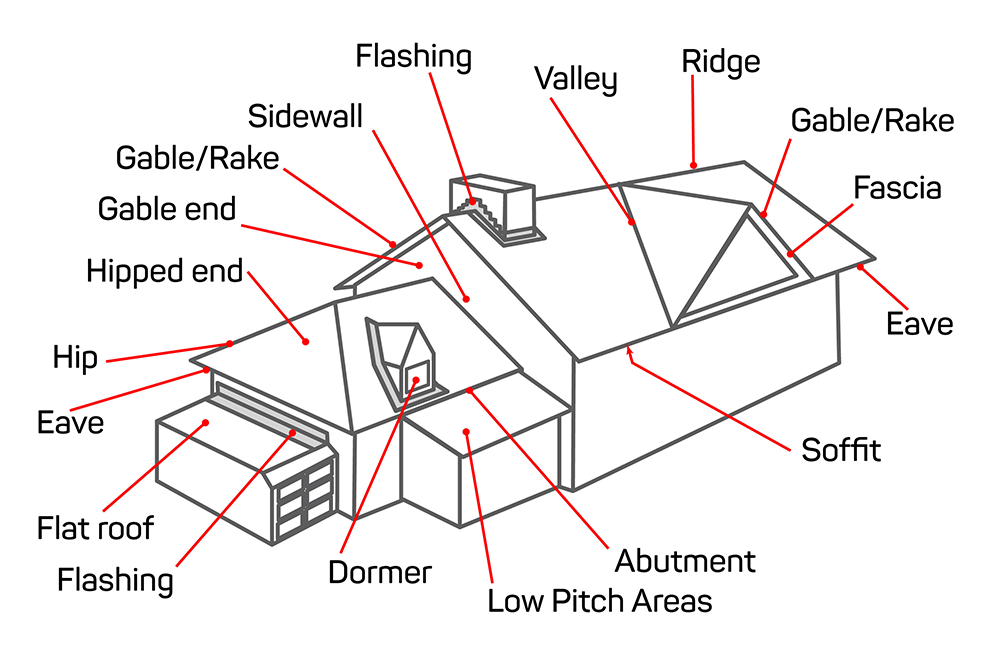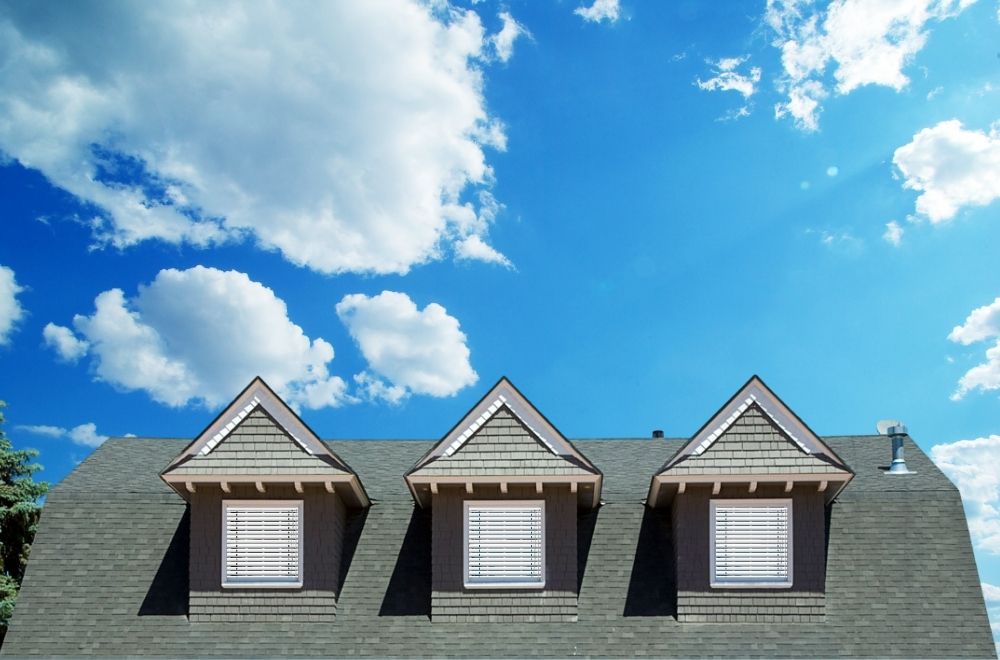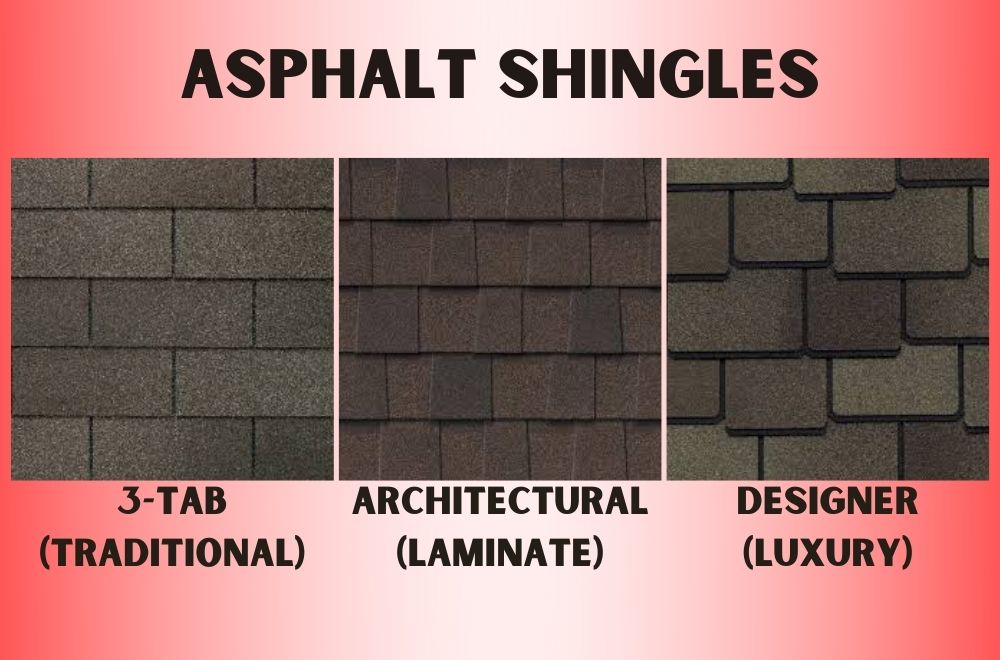The Anatomy of a Pitched Roof
Published: 11/6/2020

Your home’s roof goes much deeper than its shingles; an entire network of components work together to protect your home from rain, wind, pests & more. While roofs come in all shapes and sizes, the basic anatomy remains the same across most roofs you’ll come across in your life. The components defined below are universally known in the roofing industry and thus it’s important to know them if you ever intend to build, repair or own a roof.
Abutment
This is where the face of the roof meets the wall of the home, rather than a roof ridge. Abutments are commonly found on small home additions, attached sheds or garages.
Decking (Sheathing)
Plywood or OSB that covers the rafters; it acts as the base of the roof onto which the layers of the roofing are mounted.

Dormer
A vertical projection that typically houses a window; dormers are typically located on the face of the wall or on top of the roof. Dormer roofs can be gabled, hipped, flat or sloped on one or both sides.
Drip edge (Eaves Flashing)
This is a metal flashing added to the edges of the roof to direct runoff water away from the fascia and into the gutters, protecting the underlying roofing components from moisture.
Fascia
The fascia is often referred to as the ‘trim,’ a board - usually wood, but can be aluminum, plastic or vinyl - that runs along the edge of the roofline and connects to the ends of the rafters. The fascia typically holds gutters in place and is protected from moisture by the metal drip edge.
Eave
The part of the roof that hangs over the edge of the home’s exterior walls.
Flashing
Flashing is a thin metal sheet installed around any penetration in the roof to prevent water from entering the home, essentially sealing the area around the penetration. Flashings are installed around:
- Chimney
- Skylights
- Plumbing vents
- Valleys
- Dormers
- Roof vents
- Attic vents
- Gable end vents
- Ridge vents
- Soffit vents
Gable
The triangular portion of the wall between two roof planes meet at the ridge. A gable end is the edge of a roof above the gable, and a gable wall refers to the entire wall on which the gable exists.
Gutters & Downspouts
Gutters are plastic or metal troughs that carry stormwater away from the edge of the roof. The gutters connect to downspouts, which carry the water down and away from the home.
Hip
The point at which two roof faces meet and slope downward. A hip is similar to a ridge but is less steep and can exist in multiples on a single roof (while the ridge is the topmost peak of the roof). A roof with four hips is referred to as a pyramid roof, while a roof with only two hips (a hip at each end) is referred to as a hipped roof.
Joists (Ties)
These wooden planks span an open space, connecting two opposing walls and supporting the ceiling below and/or the floor above. The soffit is typically attached to the bottom of the joist.
Ridge
The topmost peak of the roof, where two sloping roof planes meet.
Ridge Vent
A vent that runs along the length of the ridge to provide extra ventilation for the structure.
Roof Plane
This is the surface of the roof, delineated by 4 separate edges. Two roof planes meet to create the ridge.

Shingles
The outer layer and the most recognizable of roof components. There are many types of shingles, and what’s best for each home depends on several factors, including climate, budget, structural strength/integrity and preference. The main types of residential roofing shingles include the following:
- Asphalt Shingles
- Traditional 3-tab shingles
- Laminate (architectural) shingles
- Designer shingles
- Metal tiles or panels
- Aluminum
- Steel
- Copper
- Alloy
- Slate
- Clay/Concrete shingles or tiles
- Solar shingles
- Composite
- Polymer
- Rubber
- Plastic
Asphalt shingles are the most common roof covering for homes in North America. There are three main styles of asphalt shingles:
Traditional shingles: The shingles are all the same size and shape, giving the roof a uniform look, and are considered one of the most budget-friendly options for residential roofing.
Architectural (laminate, dimensional) shingles: These shingles are high-quality, durable and recognizable by the dimensional look they create. They are multi-layered, composed of a heavy fiberglass base with ceramic-coated mineral granules embedded in water-resistant asphalt.
Designer (luxury) shingles: These shingles provide maximum durability as well as the aesthetic of natural slate or cedar shake at a price that is much more affordable than real slate or cedar. One thing to keep in mind is that since they’re multi-layered and extremely high-quality, they add up to twice as much weight to the roof as 3-tab shingles.
Soffit
The horizontal finished underside of the eaves when the eave extends past the exterior wall. Soffits are commonly perforated or vented to provide air flow for the attic space. These vents are called undereave vents.
Truss & Rafters
The framework of wood beams that support the roof. The rafters are the beams of a roof truss that run from top to bottom. All other roofing materials rest upon the truss and its rafters.
Underlayment
Underlayment is a water-resistant layer installed directly onto the sheathing underneath the shingles to provide an added layer of protection against moisture and wind. The underlayment material can include asphalt-saturated felt or synthetic, which is typically made from long-lasting polymers for added strength, durability and moisture resistance. Synthetic underlayment tends to offer better protection against the elements, thus is typically more expensive than felt.
Valley
A valley is created where two pitched roof faces connect and project inward, creating a V or W shape. Valleys are flashed with a long, flat piece of metal with a V- or W-shaped crimp. It is possible to cover a valley with shingles, but metal flashing is more effective.
Water-resistive barrier (WRB)
A thin layer of material installed underneath the shingles to protect the roof from ice dams, rain and wind. Some WRBs on the market also act as vapor retarders, which means they allow very little water vapor to pass through them. Adding a secondary water barrier (SWB) could make your roof eligible for an additional insurance credit. Ask your roofer for more information.
Your roof is a complex, crucial part of your home, but you can rest assured that our experts are extensively trained, fully licensed and insured and familiar with the requirements set forth by the FBC standards. To learn more roofing-related terms, visit our roofing term glossary.
AKVM is your hometown roofing company, certified by Owens Corning, GAF, Atlas and Boral Tile as a preferred contractor. Give us a call today to request your free estimate.